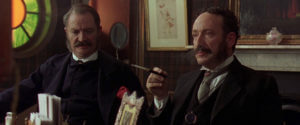Dear Readers,

It is both uncharacteristic and a compendium of Mike Leigh’s work.

A film about someone with inspiring compassion and fearlessness.

Hal Ashby aims to snap the viewer out of their vegetative state, compelling us to choose an alternative, limitless state of mind.

A portrait of the horror that results from an entrenched ideology.

Claude Lanzmann wants and needs its audience not only to remember but experience the full trauma of the past.

A pure and political art film rich with enigmas and uncertainty to spare.

Altman dissects the old-fashioned notion of mutual respect between the master and servant classes, exposing the hidden cruelties between them.

One of the Coen brothers’ funniest and most accessible films, it is also among their most introspective.

Lucrecia Martel’s exquisite and haunting adaptation of Antonio Di Benedetto novel is sensuous and formally audacious.